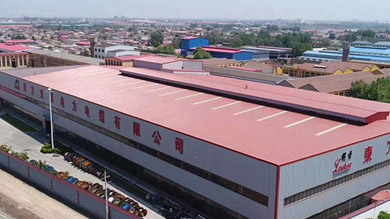ທ.ວ. . 25, 2024 13:09 Back to list
Understanding the Functionality of Silent Check Valves in Fluid Systems
Understanding Silent Check Valves Their Importance and Functionality
Silent check valves play a critical role in various fluid systems, particularly in plumbing and industrial applications. These valves are designed to allow fluid to flow in one direction while preventing backflow, a function they share with traditional check valves. However, silent check valves have several distinctive features that enhance their performance and application range.
What is a Silent Check Valve?
A silent check valve is a specialized device that prevents the reverse flow of liquids or gases by using a spring-loaded mechanism. Unlike standard check valves that can create a loud banging noise when flow is disrupted, silent check valves are engineered to operate quietly. This feature makes them particularly desirable in settings where noise control is important, such as in residential plumbing or in certain industrial applications.
How Does It Work?
The operation of a silent check valve revolves around a moving disc or diaphragm that responds to changes in flow direction. When the fluid moves in the intended direction, the disc is pushed open, allowing unobstructed flow. However, if the flow begins to reverse, the pressure difference forces the disc or diaphragm to close, preventing backflow. The use of springs in many silent check valves ensures that this closure happens swiftly and silently.
Advantages of Silent Check Valves
1. Noise Reduction One of the most significant advantages of silent check valves is that they minimize noise associated with water hammer—a phenomenon where the sudden stop or reversal of water flow generates loud banging sounds in pipes. The noiseless operation is essential in environments like hospitals and residential buildings.
2. Reliability Silent check valves are known for their reliability. Their design allows them to withstand fluctuations in pressure and flow rates, ensuring that the system remains intact and operational.
silent check valve

3. Versatility These valves can be used in a variety of applications, ranging from water supply systems to heating and cooling systems, making them a versatile choice for engineers and builders.
4. Compact Design Typically, silent check valves are more compact than other types of check valves, making them easier to install in tight spaces.
5. Maintainability Many silent check valves are designed for easy maintenance, with some models featuring removable parts that allow for straightforward repairs without needing to replace the entire valve.
Applications of Silent Check Valves
Silent check valves are widely used across numerous industries. In residential plumbing, they prevent backflow that could contaminate the water supply. In HVAC systems, these valves help maintain pressure and control system efficiency. Additionally, in wastewater treatment plants, silent check valves assist in directing flow and preventing reverse flow, which can cause serious system failures.
Choosing the Right Silent Check Valve
When selecting a silent check valve, it is essential to consider the specific requirements of the application, including flow rate, pressure, and the type of fluid. Valves are available in various sizes and materials, allowing customization to fit different system needs. Consulting with an engineer or a valve specialist can greatly help in making the right choice.
Conclusion
Overall, silent check valves are invaluable components in modern fluid systems. Their noise-reducing capabilities, reliability, and versatile applications make them essential in various settings. By preventing backflow without compromising system integrity, silent check valves ensure that operations run smoothly and efficiently. As industries continue to evolve, the importance of these components in achieving optimal performance cannot be overstated. Investing in the right silent check valve can significantly enhance system functionality and durability, making them a wise choice for any engineering project.
Share
-
Reliable Wafer Type Butterfly Valves for Every IndustryNewsJul.25,2025
-
Reliable Flow Control Begins with the Right Ball Check ValveNewsJul.25,2025
-
Precision Flow Control Starts with Quality ValvesNewsJul.25,2025
-
Industrial Flow Control ReliabilityNewsJul.25,2025
-
Engineered for Efficiency Gate Valves That Power Industrial PerformanceNewsJul.25,2025
-
Empowering Infrastructure Through Quality ManufacturingNewsJul.25,2025


